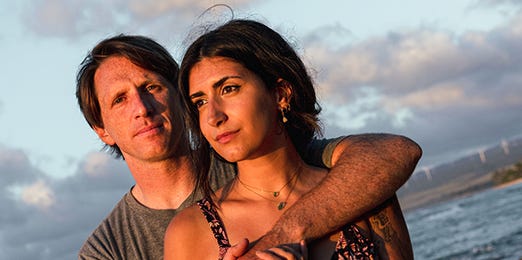In the language of endurance, there exists a unique dialect of resilience, shaped by moments that demand not just physical exertion, but profound mental fortitude. Colin Cook and Sydney Corcoran emerged from life-altering events that could have eclipsed both their dreams and identities. Instead, they found a different path, one that walked them back to the water, the waves, and ultimately, to each other.
Colin, a surfer habituated to the rhythmic pull of the ocean, transformed his life after a shark attack led to the amputation of his left leg above the knee. On the surface, this harrowing experience could easily become a story of tragedy, but for Colin, it instead paved the way for a remarkable journey that intimately connected pain and rebirth. Once defiant against professional competition, he now aimed for something greater—a desire to redefine not just what it meant to surf but how to engage with life itself after upheaval.
In the initial days after the attack, Colin faced the reality of his limbs and the mental barriers that loomed larger than the physical ones. Thoughts of inadequacy seeped in, as they often do in moments of profound change. Yet, as experienced endurance athletes know, the essence of training extends beyond mere physical practice to include mental adaptation. Colin began to navigate a new identity not through denial or sorrow, but by leaning into the discomfort. He confronted the challenges that came with a prosthetic leg, much like an athlete must adjust to training with an injury or adapt to the limitations imposed by fatigue.
The construction of his new life relied on the same principles that drive endurance athletes through long miles—patience, adaptability, and unwavering motivation. He sought out engineers who could help design a prosthetic specifically for surfing, which reflected not only his physical needs but also his emotional landscape. This wasn’t merely about creating a tool to ride the waves; it was about reclaiming a part of himself that felt lost. Each modification and iteration mirrored the iterative nature of training cycles, dealing with setbacks, refining approaches, and resetting expectations based on reality.
Sydney, on the other hand, had her own crucible at the finish line of the Boston Marathon, where a bomb exploded, placing her family in the grip of chaos. Her recovery from physical injury became a canvas for mental struggles that challenged her sense of self. While she weathered the immediate aftermath with impressive resilience, the lingering effects of trauma shadowed her steps. Yet, similar to the endurance journey, it became clear that healing isn’t linear; it ebbs and flows much like a tide.
In their shared understanding of endurance, Colin and Sydney found a profound connection—a bond forged in the fires of adversity and sculpted by resilience. Both faced their fears but found strength in vulnerability, a powerful reminder for athletes who often feel they must present an unbreakable front in the face of challenges. Their mutual support transformed their journeys, illustrating the critical role of community in endurance sports; surrounding oneself with those who understand the struggle can offer strength and courage when the inner voice begins to falter.
As Colin re-entered the surf, every paddle out into the ocean became a reaffirmation of his identity. The physical act of surfing was fraught with emotional depth, reflecting what many athletes face as the body struggles to keep pace with their aspirations and fears. He learned that with each wave, it wasn’t just about riding but about the mental clarity that came with focusing on the moment, the water, and the rhythm of breath and movement. The water’s embrace became a metaphor for the challenges athletes face: both nurturing and overwhelming, requiring respect and understanding.
Simultaneously, Sydney discovered her own strength through her relationship with Colin. She learned that vulnerability could coexist with power, and that endurance isn’t just a matter of staying the course, but also of being open to the complexities of recovery in all its forms. Together, they rediscovered the thrill of living, finding ways to pivot their individual struggles into a collective journey that honored both their pasts and possibilities.
For endurance athletes, the takeaway here is simple yet profound: resilience isn’t just found in crossing the finish line or achieving a personal best. It lies in navigating the tumultuous journey between gaps and setbacks, where pacing is just as much about mental preparation as it is about physical conditioning. Like Colin and Sydney, we can embrace our struggles, those moments that seem insurmountable, and use them as stepping stones rather than stumbling blocks.
In your next long session, remember that the path of endurance is not just a measure of physical capability, but an exploration of resilience, empathy, and connection. In the end, embracing your vulnerabilities could well be the very foundation that helps you ride your next wave with grace.
